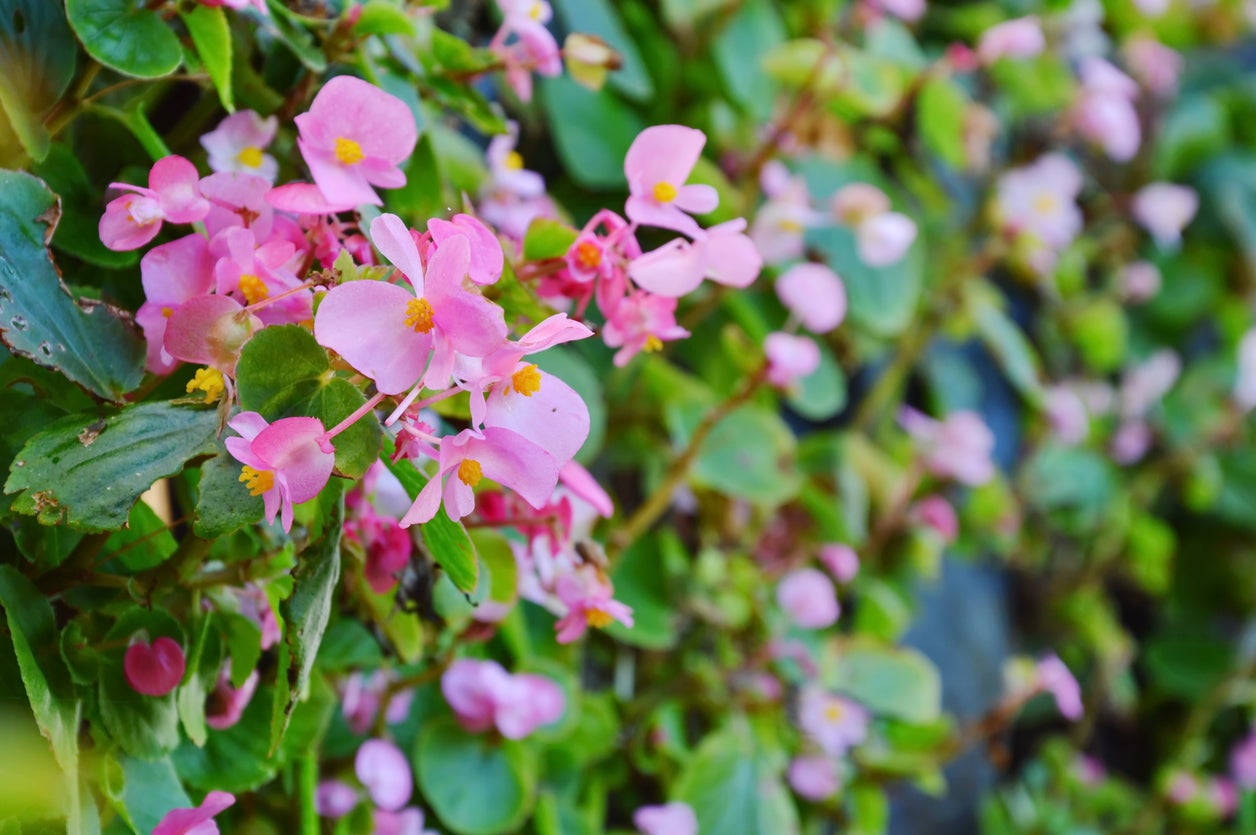How To Feed Tuberous Begonias – Tips For Tuberous Begonia Fertilizing


As a gardener, it can be overwhelming when trying to assess your garden’s fertilizer needs. So many questions: Does this plant need fertilizer? What kind of fertilizer? How much fertilizer? When and how to fertilize? You get the picture. The struggle is real; so real that many gardeners don’t bother to fertilize anything, even their tuberous begonias!
Feeding Tuberous Begonias
I need a moment to process that last part – tuberous begonias. Showy and stunning with so many options. Single or double blossoms. Plain or ruffled flowers. Color palette from white to crimson with bicolor options. Cascading or upright varieties. I LOVE THEM! These are flowers that you definitely want to thrive! Fertilizing tuberous begonia is important because they are heavy feeders, not unlike most plants which are heavy bloomers. And, it is also not surprising that tuberous begonia are heavy feeders when you consider that they are also providing nourishment to their tubers - nutrition is being packed away for future growth! Read on to learn more about how to feed tuberous begonias.
How to Feed Tuberous Begonias
When it comes to tuberous begonia feeding, gentle applications of fertilizer are the recommended route. If you apply fertilizer that is too highly concentrated or if you overfeed, you will see evidence of fertilizer burn (brown crispy spots) on the begonia leaves. On the flip-side, if you are not fertilizing or under-fertilizing your begonias, you may be presented with results that are somewhat underwhelming, such as smaller-than-expected blooms or singles instead of doubles for blooms. If starting tubers indoors, it will eventually be time to transplant the plants into the containers or flower beds and think about fertilizer for a tuberous begonia. And keep in mind, these are not the only approaches you can take for tuberous begonia fertilizing.
Tuberous Begonias in Containers
For containers, I’m going to propose the easiest method for tuberous begonia fertilizing: When transplanting, fill the container half full of soil then gently set the begonia plant into the pot. For each potted plant, add in a half teaspoon of a time release fertilizer, then continue filling the pot with soil, followed by a thorough watering. You may also top-dress the soil with the half teaspoon of granules if you forget to incorporate the fertilizer into the soil as prescribed here, or if you buy a pre-planted pot of begonias. This application of fertilizer for a tuberous begonia should last for the growing season of the begonia plants.
Tuberous Begonias in Garden Beds
Prior to the onset of flower buds, you will want to administer a 5-1-1 fertilizer, such as fish emulsion for tuberous begonia feeding. Mix one tablespoon (14.7 ml.) of fish emulsion with one gallon (3.78 L.) of water and apply twice a month per plant. Upon the formation of flower buds, you will want to apply a fertilizer cocktail of the 5-1-1 fertilizer and a bloom (0-10-10) fertilizer. Mix one tablespoon (14.7 ml.) of each into one gallon (3.78 L.) of water and apply every two weeks per plant. Stop fertilizing tuberous begonia when the plant begins to decline – i.e. yellowing leaves, spent blooms, etc. This will probably happen sometime around late summer or early fall.
Gardening tips, videos, info and more delivered right to your inbox!
Sign up for the Gardening Know How newsletter today and receive a free copy of our e-book "How to Grow Delicious Tomatoes".

Shelley Pierce was a writer for Gardening Know How, contributing to hundreds of articles for the site.
-
 8 Perfect Flowers To Plant With Tomatoes To Boost Yields & Banish Pests
8 Perfect Flowers To Plant With Tomatoes To Boost Yields & Banish PestsDon’t forget flowers when choosing companion plants for your tomato beds or pots. These pretty, fragrant flowers add beauty but are also highly beneficial.
By Mary Ellen Ellis
-
 Want The Longest Lasting Hydrangea Flowers? Grow These 8 Panicle Hydrangea Varieties
Want The Longest Lasting Hydrangea Flowers? Grow These 8 Panicle Hydrangea VarietiesFor ornamental shrubs that deliver the longest flowering seasons with plush blooms and delicate hues, these panicle hydrangea varieties are essential in your yard
By Tonya Barnett